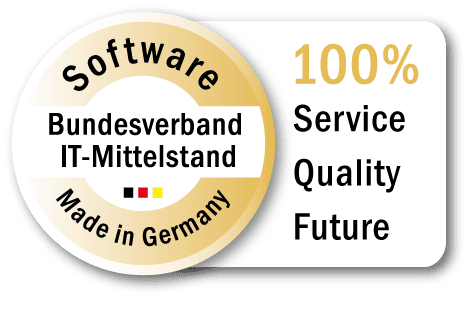The Industrial Unified Namespace (UNS) is establishing itself as the leading data architecture in the manufacturing industry. Nevertheless, there are major challenges when introducing this architecture concept. Technical hurdles can often be overcome, but organizational challenges pose greater problems for companies. In the following, we explain why Unified Namespace (UNS) projects fail in practice by looking at the six most common organizational pitfalls that need to be avoided.
1. Unified Namespace (UNS) not derived from company goals
A key factor in the failure of the UNS architecture in production is the inadequate definition of clear objectives at company level. It is defined “what” (e.g. Mosquitto Broker as a central infrastructure component) and “how” (e.g. via own DevOps resources) the UNS should be introduced. However, the most important question remains unanswered: Why? To what extent does the company pursue overarching corporate goals with the UNS architecture? To what extent does the UNS introduction influence these goals? A lack of focus on the overarching goals leads to a rapid fading of the initial hype, motivation and prioritization among employees.
2. Lack of standardization of OT data
In the factory environment in particular, there is often a lack of governance mechanisms for the standardized organization and structuring of OT data, e.g. in the form of data architecture guidelines. In practice, this gap always leads to problems in scaling and significantly impairs the success of the UNS introduction. Without company-wide standardization and harmonization of machine data, the introduction of a UNIFIED Namespace is doomed to failure.
3. Lack of resources & budget for data infrastructure
Why Unified Namespace (UNS) projects fail? A lack of financial resources, insufficient specialist staff and capacity are killers for the introduction of a UNS architecture. No long-term success without resources! The definition of a project manager is not sufficient! Instead, companies need to define new responsibilities and roles in order to build a sustainable UNS architecture. Based on this, it is crucial to allocate appropriate budgets to fill these positions with experts and to equip the experts with the necessary tools (e.g. for the data infrastructure).
4. Too much focus on technology and too little on added value
A common dilemma is that companies get lost in technical details instead of focusing their already scarce resources on the essentials. While the focus should be on process optimization on the basis of data, resources, which are usually scarce anyway, are occupied with the implementation of the UNS infrastructure. Although components for data storage, processing, distribution and visualization are essential, they are merely a means to an end.
5. Lack of commitment at management level
Another reason for the failure of the UNS architecture in production is the lack of prioritization at management level. Without a clear commitment, the management level merely grants the necessary freedom. In the medium term, this leads to a lack of prioritization and resources, which is detrimental to sustainable implementation. The management level must recognize the importance of data and the UNS architecture for the future success of the company, actively promote it and communicate its relevance for the company’s goals.
6. Culture eats Unified Namespace (UNS) for breakfast
Data culture refers to the way an organization perceives, uses and values data to promote informed decision-making. Collaboration and the involvement of all employees are particularly important on the shopfloor. Without the active involvement of employees at all hierarchical levels, the realization of data projects – and therefore also the introduction of a UNS – is doomed to failure. A well-organized change process and the creation of a “data culture”, on the other hand, significantly increases the chances of success.
Conclusion
Careful planning is crucial to avoid the pitfalls mentioned above. This includes clear governance mechanisms, the active involvement of employees and regular reviews of progress so that adjustments can be made. Read our white paper for more information. It is important to emphasize that the introduction of a UNS should not be seen as a one-off project, but rather must be transferred into the organizational structure. This is the only way to achieve long-term success!
i-flow Industrial Unified Namespace (UNS)
About i-flow: At i-flow, we are dedicated to empowering manufacturers with the world’s most intuitive software to seamlessly connect factories at scale. Over 400 million data operations daily in production-critical environments not only demonstrate the scalability of the software, but also the deep trust our customers place in i-flow. Close cooperation with our customers and partners worldwide, including renowned Fortune 500 companies and industry leaders such as Bosch, Sto and Lenze, is at the heart of our business.
About the software: i-flow provides the central tools for the implementation and operation of a scalable Industrial Unified Namespace Architecture.
- Connectivity Layer: With more than 200 connectors, you can integrate common OT and IT systems into your UNS with just a few clicks.
- Harmonization Layer: The i-flow software harmonizes source data before it is made available in a central message broker.
- Message broker: i-flow comes with a fully integrated MQTT broker, but also supports existing brokers (e.g. MQTT, Kafka).
- Microservices: Combine, aggregate and transform OT and IT data via i-flow microservices, for example to calculate KPIs or realize complex integrations.


